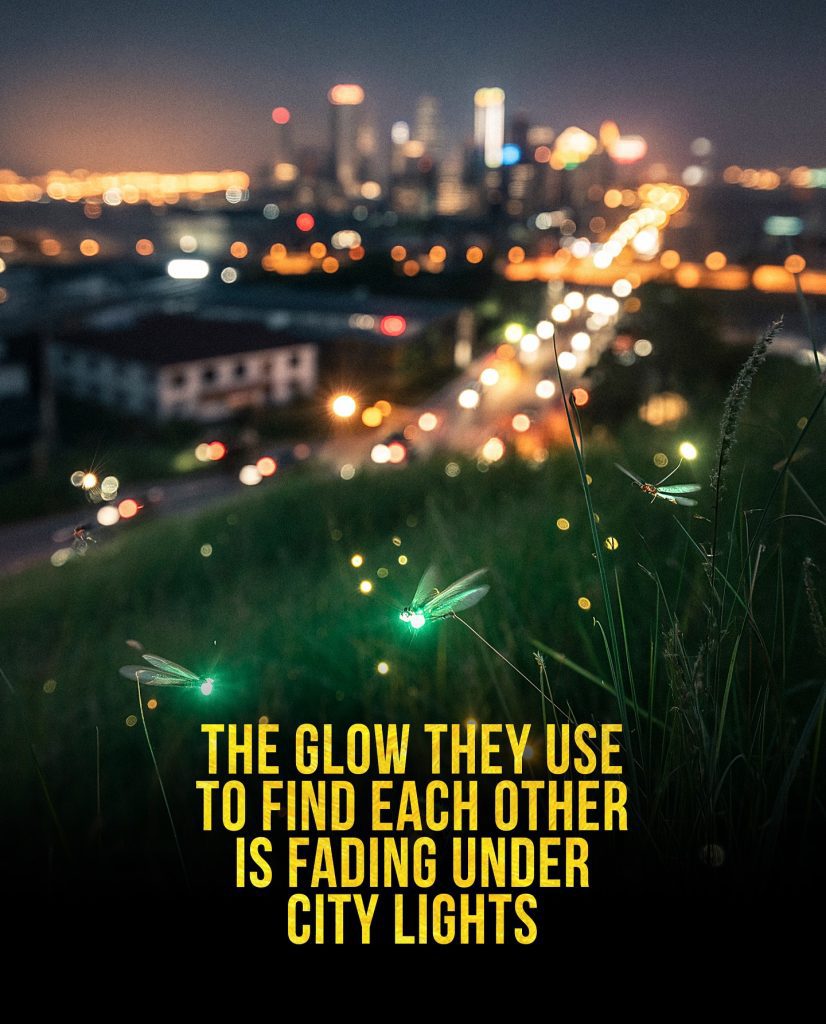Fireflies Are Quietly Disappearing — And Scientists Warn We Could Be the Last Generation to Ever See Their Magical Glow
On a warm summer night, there’s something timeless about standing outside and watching fireflies light up the darkness. Their soft golden glow flickers across fields and forests, tiny pulses of life that once filled the air with wonder. But today, those flashes are fading. Fireflies, once symbols of long summer evenings, are disappearing faster than many people realize — and scientists warn that we might be the last generation to see them in the wild.

There are over 2,000 known species of fireflies across the world, each with its own rhythm of light, its own silent language in the night. Yet, every year, their numbers drop in alarming ways. The reasons are complex but heartbreakingly human: deforestation, expanding cities, pollution, and the relentless march of concrete over the green spaces they once called home. As wetlands are drained and forests cleared, fireflies lose the damp, natural environments they depend on to breed and thrive.

One of the biggest threats to fireflies isn’t just the loss of land — it’s light itself. The same city glow that humans see as progress is blinding the insects that rely on darkness to communicate. Their light patterns are how they find each other and mate, but under the glare of streetlamps and billboards, those signals vanish. To them, the night no longer exists. A male firefly might blink his light over and over, waiting for a response that will never come. Scientists call this “light pollution,” but to the fireflies, it’s extinction in slow motion.

Then there’s drought. Fireflies spend most of their lives as larvae in damp soil or decaying wood, feeding and growing before transforming into the glowing adults we love to see. But climate change and unpredictable weather are drying out those crucial habitats. Without moisture, the larvae die before they ever have a chance to glow. Pesticides make the problem worse — chemicals that seep into the ground poison them long before they reach adulthood. What we lose isn’t just a species, but an entire cycle of light and life that’s been part of nature for millions of years.
The saddest part is that most people don’t even notice they’re gone. We grow up seeing fewer and fewer of them, and we assume it’s normal. But older generations remember fields so full of fireflies that it looked like the stars had fallen to Earth. Those memories are fading, just like the insects themselves.

Yet, it’s not too late. Conservationists say that protecting fireflies doesn’t require massive change — it just requires awareness. Turning off outdoor lights at night, using fewer pesticides, and preserving small patches of wetlands or wooded areas can make a difference. Even little steps, like keeping a backyard dark or leaving parts of a garden wild, can help give them space to return.
There’s still magic out there, still a chance to bring back the sparkle in the night. The next time you see a firefly flicker in the dark, take a moment to realize what you’re witnessing — a light that has survived for millions of years, a heartbeat of nature itself. Because if we don’t protect that light now, the next generation may grow up in summers where the night sky is dark not just above, but all around.

